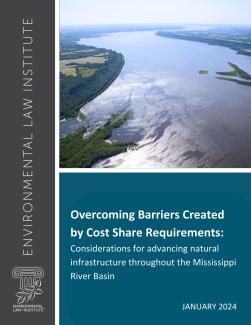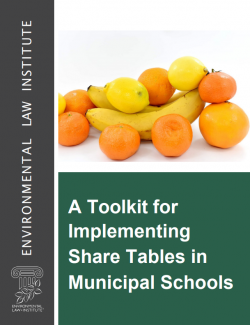Movers
Jenner & Block’s Washington, D.C., office has tapped Jennifer Amerkhail as partner. Amerkhail served for 16 years as a lawyer for the Federal Energy Regulatory Commission.
The National Park Service has announced that Stanley Austin will take over as regional director of the NPS South Atlantic-Gulf region. Austin most recently served as regional director of the Lower Colorado Basin, Columbia-Pacific, California-Great Basin and Pacific Islands region.
Tom Boer joins Hogan Lovells’s environment and natural resources practice. Boer most recently worked for Hunton Andrews Kurth LLP, and previously served at the Justice Department and EPA’s Office of General Counsel.
Chicago-based environmental boutique law firm Nijman Franzetti LLP welcomes Susan E. Brice as partner. Brice formerly co-led the toxic tort group at Bryan Cave Leighton Paisner LLP.
Phillip Brooks has stepped down from his position as air enforcement chief of EPA to join 3M as associate general counsel for environmental compliance.
Juan Andres Caro joins the Department of Energy as a special adviser in the Office of Electricity. He previously spent two years working at the White House Office of American Innovation and the Domestic Policy Council.
Ed Carter has stepped down from his position as executive director of the Tennessee Wildlife Resources Agency. Deputy Executive Director Bobby Wilson will now lead the agency.
The National Wildlife Federation has tapped Chanté Coleman as the organization’s first vice president for racial equity and justice. Coleman previously led the Chesapeake Bay-based Choose Clean Water Coalition.
The Sierra Club welcomes Ramón Cruz as president. Cruz most recently served in senior positions at the Environmental Defense Fund and as deputy director of Puerto Rico’s environmental regulatory agency.
Joe Dawley will now serve as partner at Earth & Water Law in Washington, D.C. Dawley has more than 30 years of experience in environmental law, including as an attorney at EQT Corp.
Ross Gillfillan will serve as vice president of communications at Citizens for Responsible Energy Solutions. Gillfillan previously served as director of strategic communications for the Office of Science and Technology Policy.
Bryan Howard will now lead state-level energy efficiency and clean energy initiatives at the American Council for an Energy-Efficient Economy. Howard was formerly a lobbyist at the U.S. Green Building Council and served as an aide to former Rep. Mark Udall (D-CO).
Virginia Governor Ralph Northam has appointed longtime Federal Energy Regulatory Commission official Jehmal Hudson as commissioner at the Virginia State Corporation Commission. Hudson has held several legal positions, including directing FERC’s office of government affairs.
Green 2.0, a nonprofit dedicated to promoting racial diversity in the environmental movement, has named Andrés Jimenez as its first full-time executive director. Jimenez previously served as senior director of government affairs at the Citizens’ Climate Lobby.
Renée Martin-Nagle joins Eckert Seamans as special counsel after serving as CEO and president of A Ripple Effect plc, an international water law and management consultancy.
Moira Mcdonald has been promoted to director of the Environment Program at the Walton Family Foundation after leading the foundation’s Mississippi River and Delta initiatives for 11 years. She previously was editor of ELI’s National Wetlands Newsletter.
The nonprofit California Water Data Consortium has named Tara Moran as president and CEO. Moran comes from Stanford University’s Water in the West Sustainable Groundwater program.
NOAA has tapped longtime agency official Paul “Sammy” Orlando as the first superintendent of the Mallows Bay-Potomac River National Marine Sanctuary in Maryland.
Sethuraman Panchanathan now serves as director of the National Science Foundation. Panchanathan previously served as chief research and innovation officer at Arizona State University.
Carlos Manuel Rodriguez takes the helm as CEO and Chairperson of the Global Environment Facility. Rodriguez has served three terms as minister of environment and energy in Costa Rica.
Jane Rueger has been named president of the Energy Bar Association’s board of directors and partner at Perkins Coie LLP. Rueger previously worked as a partner at White & Case LLP.
Suzi Ruhl has stepped down from her position as senior counsel to the EPA Office of Environmental Justice to join the faculty at Yale School of Medicine. Ruhl will work to advance health, economic, and environmental justice through the Yale Child Study Center.
Bill Sheehan takes the lead as regional director of Presque Isle’s Department of Environmental Protection after serving at the office for 30 years.
The American Chemical Society has named Shane Snyder as the editor-in-chief of its journal ACS ES&T Water. Snyder serves as executive director of the Nanyang Environment & Water Research Institute and professor at Nanyang Technological University - Singapore.
Defenders of Wildlife has announced Renee Stone will serve as a senior adviser before stepping into the role of senior vice president starting in 2021. Stone comes from the National Audubon Society, and previously held leadership positions at NOAA and the Department of Energy in the Obama administration.
Crystal Upperman joins Aclima, a San Francisco-based company that maps global air pollution and greenhouse gases, as a senior scientist. Upperman has over a decade of experience in climate change and health, and most recently served as senior research associate at the World Resources Institute.
Kristine Wiley takes the helm as the director of the Hydrogen Technology Center at GTI after serving at the organization for nearly twenty years.
Waterways Council, Inc. has promoted Tracy Zea from vice president for government relations to president and CEO.
Shakers
Monica Collins, chief of environmental compliance in Australia, has been appointed as chair of the Australasian Environmental Law Enforcement and Regulators Network (AELERT).
Michelle De Blasi has announced the formation of her own firm, the Law Office of Michelle De Blasi. De Blasi currently serves as executive director of the Arizona Energy Consortium.
Laura Huffman and Elizabeth Seeger have joined RES’s Board of Directors. Huffman currently serves as CEO of the Austin Chamber of Commerce, and Seeger is the Director of Sustainable Investing for KKR.
Two leaders of the American Water Works Association have been appointed to the boards of nonprofit water organizations. CEO David LaFrance joins the board of Water Education Colorado, while Tracy Mehan, executive director of government affairs, was elected to the board of River Network. Mehan is book reviewer for The Environmental Forum.
Crystal Upperman, Senior Scientist at Aclima, a San Francisco-based company that maps global air pollution and greenhouse gases, has been appointed to the advisory board for the American Public Health Association’s Center for Climate, Health and Equity.
The Great Lakes and St. Lawrence Cities Initiative elected Mayor of Sheboygan, WI, Mike Vandersteen to join its board of directors. Vandersteen will work to address issues facing coastal states, including climate change, water and plastic pollution, and invasive species in Lake Michigan.
Memorial
Stanley Wayne Legro, environmental lawyer and ELI board member, passed away on August 17 at 84 years old. Legro served as EPA’s assistant administrator for enforcement from 1975 to 1977, and as a member of the National Advisory Committee on Oceans and Atmosphere from 1985 to 1989. He practiced law in Southern California, where he served on the San Diego City Planning Commission, and in Washington, DC, where he was of counsel at Verner, Liipfert (later DLA Piper). He was also an adjunct fellow at the Center for Strategic and International Studies.


